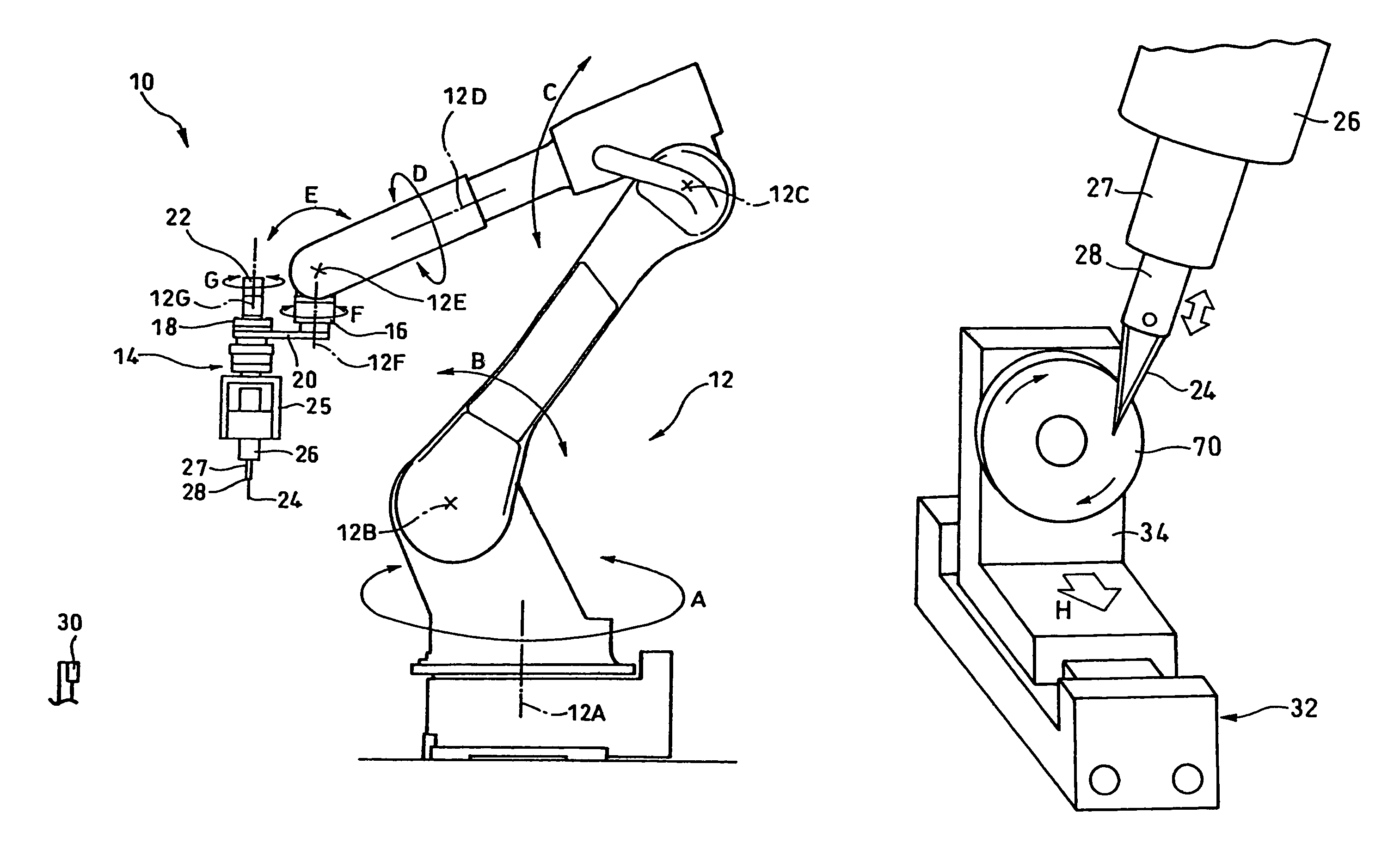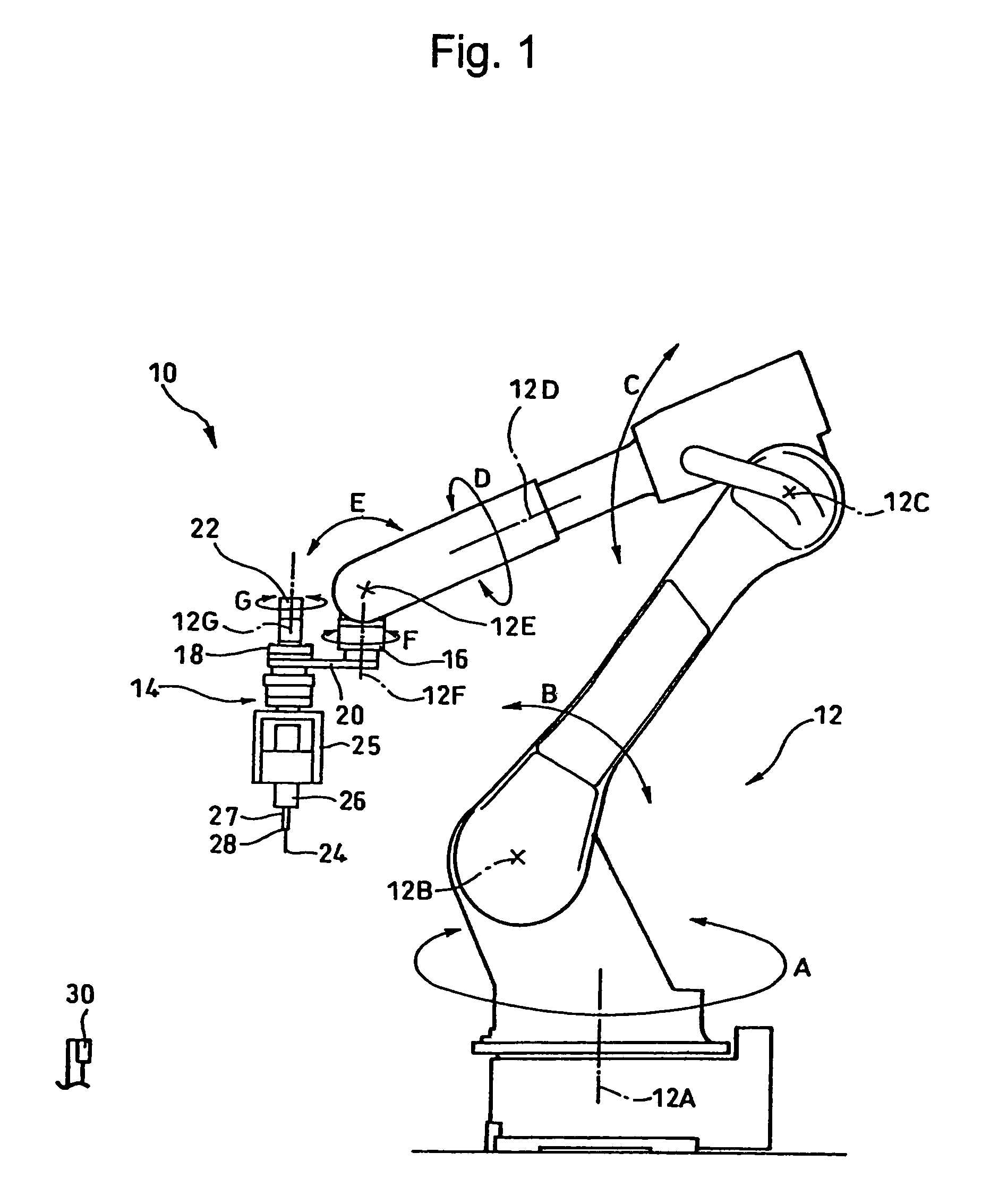Ultrasonic trimming apparatus and ultrasonic trimming method
a technology of ultrasonic trimming and trimming apparatus, which is applied in the direction of grinding machine components, metal sawing devices, manufacturing tools, etc., can solve the problems of more complicated data input, control device control, and control device input for meeting various requirements on the thickness of workpieces, etc., to achieve efficient grinding of cutter blades and efficient trimming.
- Summary
- Abstract
- Description
- Claims
- Application Information
AI Technical Summary
Benefits of technology
Problems solved by technology
Method used
Image
Examples
Embodiment Construction
[0059]As shown in FIG. 1, an ultrasonic trimming apparatus 10 of the present invention is composed of an articulated robot 12 (hereinafter referred to as a robot 12), a cutting apparatus 14, and a grindstone 30.
[0060]The robot 12 of this embodiment includes a general six-axis vertical articulated robot which has six degrees of freedom provided by six joints indicated by arrows A, B, C, D, E, and F. To an arm 16 at the end of the robot 12 is connected an additional arm 18 having an axis line parallel to the axis line (a sixth axis 12F) of the arm 16 through a connection arm 20. Since the abovementioned six-axis vertical articulated robot is of a general type, the detailed description thereof is omitted. In FIG. 1, symbols 12A, 12B, 12C, 12D, 12E, and 12F represent first to sixth joints, respectively, of the six-axis vertical articulated robot.
[0061]The additional arm 18 can be rotationally moved around a seventh axis 12G, as shown by an arrow G, by means of a motor 22 connected to th...
PUM
| Property | Measurement | Unit |
|---|---|---|
| crossing angle | aaaaa | aaaaa |
| shape | aaaaa | aaaaa |
| pressure | aaaaa | aaaaa |
Abstract
Description
Claims
Application Information
 Login to View More
Login to View More - R&D
- Intellectual Property
- Life Sciences
- Materials
- Tech Scout
- Unparalleled Data Quality
- Higher Quality Content
- 60% Fewer Hallucinations
Browse by: Latest US Patents, China's latest patents, Technical Efficacy Thesaurus, Application Domain, Technology Topic, Popular Technical Reports.
© 2025 PatSnap. All rights reserved.Legal|Privacy policy|Modern Slavery Act Transparency Statement|Sitemap|About US| Contact US: help@patsnap.com



